Learn
Our First Lessons in Driving an RV
The Hambrick family did a ton of research and preparation when they rented their first RV, but still had to learn a few lessons along the way.
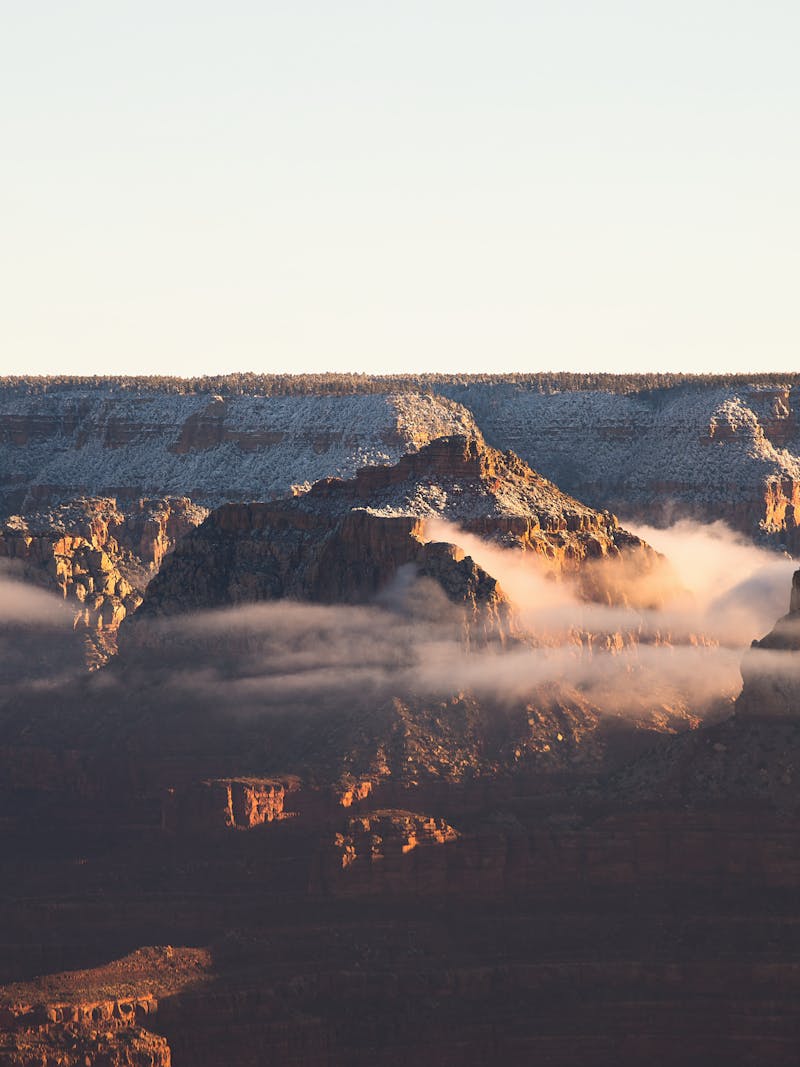
This guide first appeared on Roadtrippers in May 2019.
For many, the Southwest evokes images of flat, sandy land that stretches on forever, maybe with the occasional saguaro cactus. In reality, it's a diverse landscape boasting mountains, rivers, caves, fields of wildflowers, forests of gemstone logs, dunes, and springs. That's why there are so many National Parks found in the Southwest. There's just so much to experience, and it's all worth visiting. Here's our guide to the parks of the Southwest, from Joshua Tree to Big Bend, and everything in between.
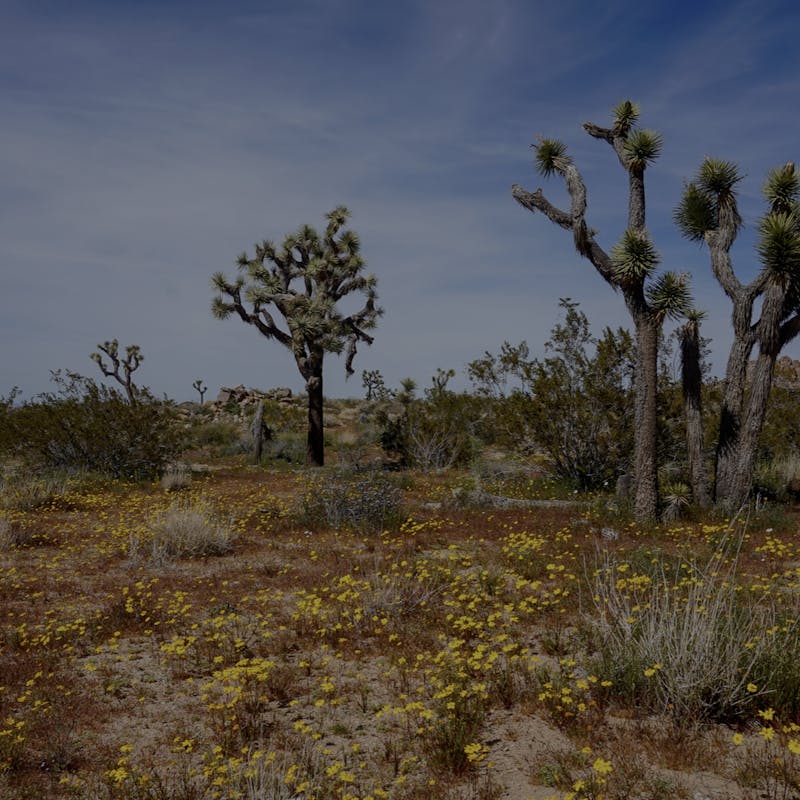
Joshua Tree National Park is proof that the desert is very much alive. It's named for the forests of Joshua trees found within. The Joshua tree isn't actually a tree, it's a kind of yucca, but Mormon settlers arriving in the area liked to think that their branches were pointing the way to the promised land, like the Biblical Joshua. This desert park also hides lush oases, hot springs, fields of wildflowers, cacti, abandoned mining ruins, crazy rock formations for climbing and bouldering, and much more. To make the most of a visit to Joshua Tree, make sure to stay in one of the park's campgrounds overnight... because once the sun sets, the views of the night sky completely bedazzled by stars are unforgettable.
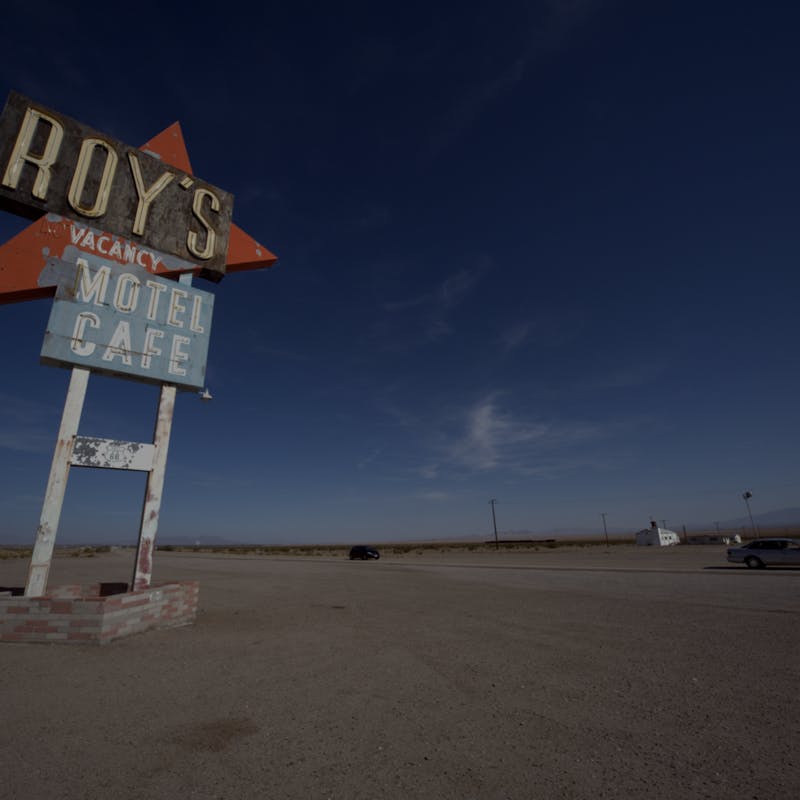
Route 66 has brought tons of roadtrippers into the deserts of the Southwest since it was first built in the 1920s. Even though it was decommissioned, there are still old-school oases in the desert that provide gas, snacks, souvenirs, and a place to stretch road-weary legs. Roy's in Amboy is one such stop that's managed to survive. It's one of the few places to take a break in the middle of the Mojave. Whether you stock up on supplies, or just want the epic photo op of Roy's awesome vintage sign surrounded by empty desert, it's a must-visit destination.
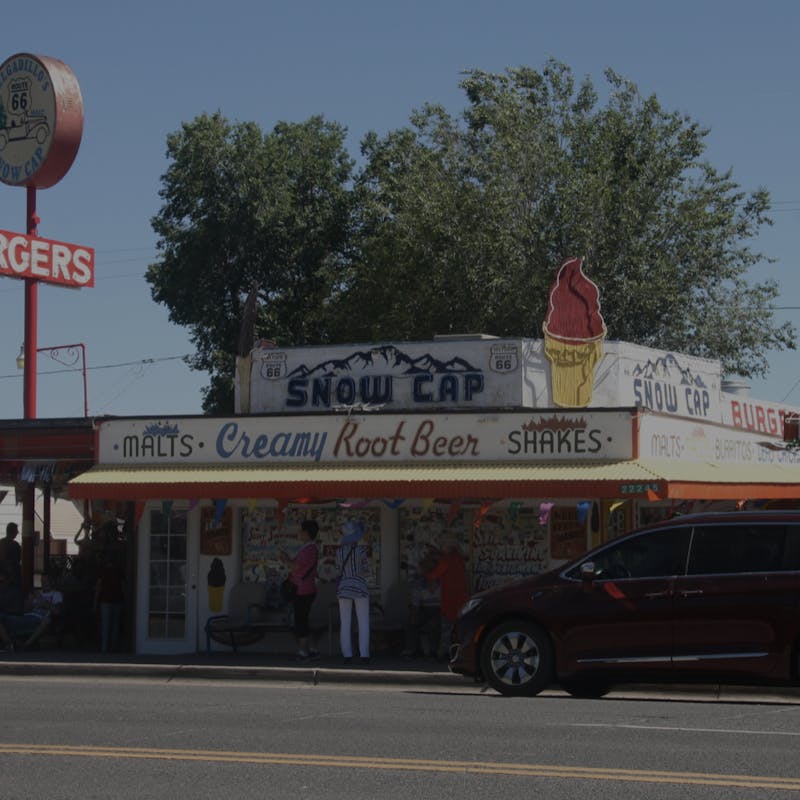
Make one more stop on Route 66 as you make your way into Arizona, this time at Delgadillos Snow Cap Drive-In. It's a perfect example of the warmth, enthusiasm, passion, and authentic, kitschy atmosphere that roadside attractions require to survive on the portions of Route 66 that are no longer major highways. The Snow Cap was opened in the 1950s by Seligman resident Juan Delgadillo, and quickly became a favorite for travelers, thanks to the goofy touches Juan put into the business. Even though Juan passed away in 2004, his younger brother, Angel, is a renowned Route 66 historian who continues to work to preserve and promote the little attractions that make Route 66 so special.
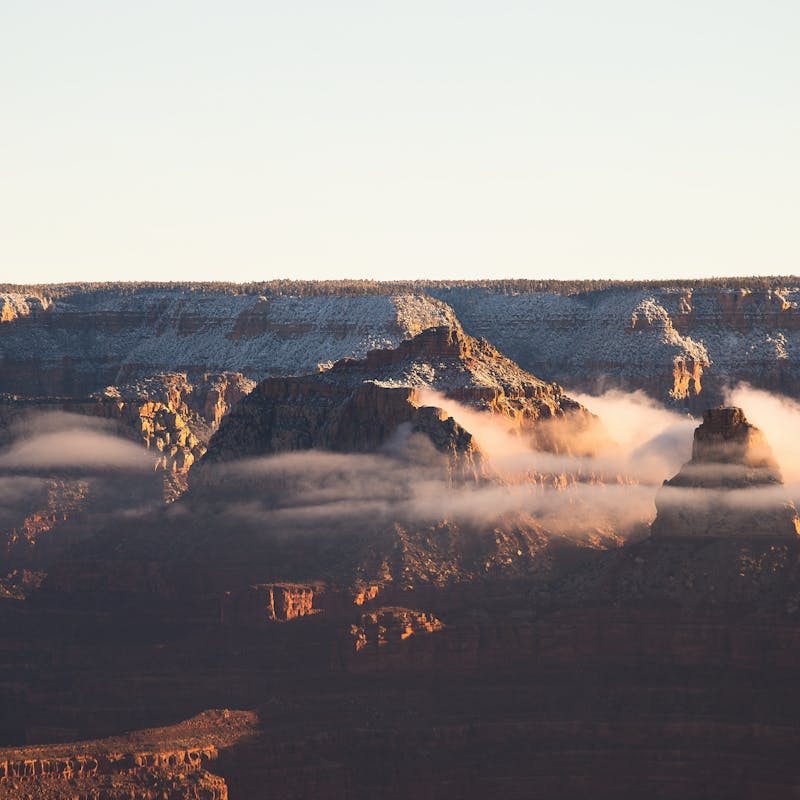
You can't tour the National Parks of the Southwest without stopping by the Grand Canyon. The canyon truly is something that has to be seen to be believed and understood; words can't do justice to its size and scope of it. Take some time to fully explore the different angles and viewpoints offered by this magnificent natural wonder; drive out to the Desert View Watchtower, or up to the less crowded North Rim, and take advantage of the viewpoints along the way. Or go on a hike-- there are lots of trails in the Grand Canyon that vary in length. The Kaibob Trail, the Rim Trail, the Bright Angel Trail and Grandview Trail are all short options with awesome views. You can also hike into the canyon down to Phantom Ranch and back (leave a full day to do this if that's your plan), or take a guided tour as well.
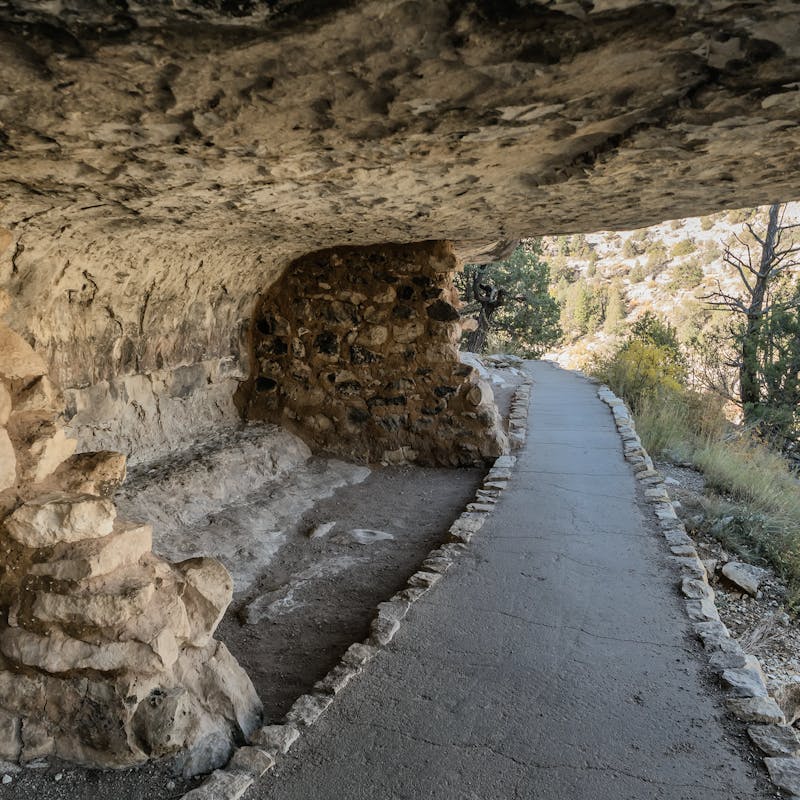
The human history of the desert is just as fascinating as its geological history. Walnut Canyon National Monument protects 25 ancient cliff dwellings from the Sinagua, a pre-Columbian group who called this part of the Southwest home. The Monument's Island Trail is about a mile long, and gets you up close and personal with these ancient pueblos. Even though these dwellings were likely built between 1125 and 1250, they're in excellent condition. Stop into the visitor center before hitting the trail to see artifacts and displays that will provide lots of valuable information and context on the Sinagua and Walnut Canyon.
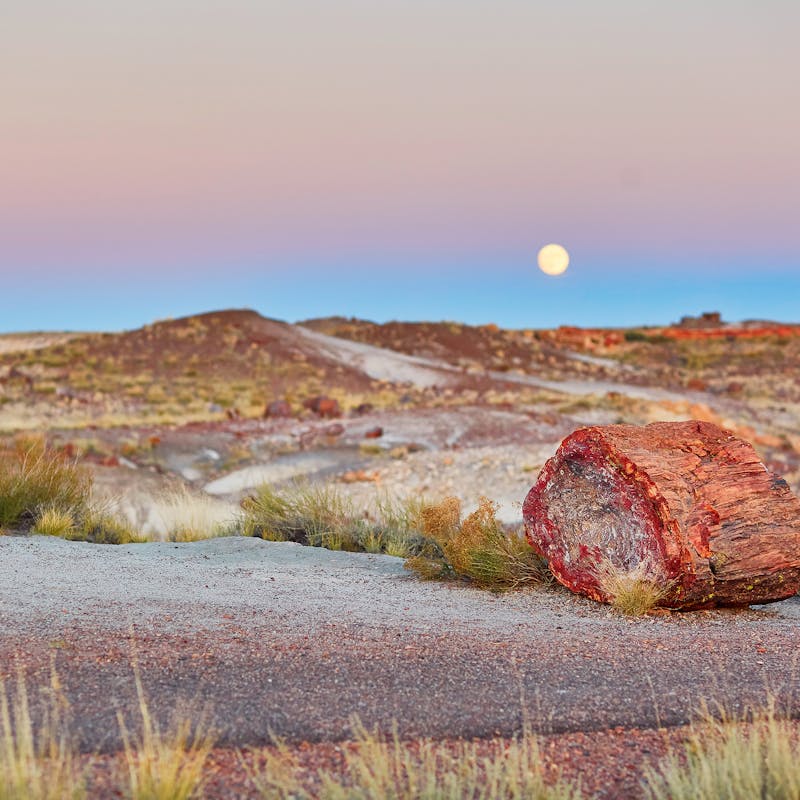
It's hard to picture, but Arizona's Painted Desert was actually once a subtropical low plain, sandwiched between mountains and an inland sea, criss-crossed by streams that carried animals and fallen trees, which became fossilized. Eventually, tectonics elevated the land, drying it out and exposing it to elements which caused erosion, revealing the fossils. Petrified Forest might be a landscape of desert and badlands, but it's incredibly colorful. Hike to a forest of sparkly, gemstone-like petrified wood, explore the rainbow-hued Blue Mesa, visit the remains of a Native American pueblo, spot petroglyphs, and admire the Agate House, built of petrified wood. As an added bonus, a portion of Route 66 runs through Petrified Forest, so you get a dose of modern history here, too.
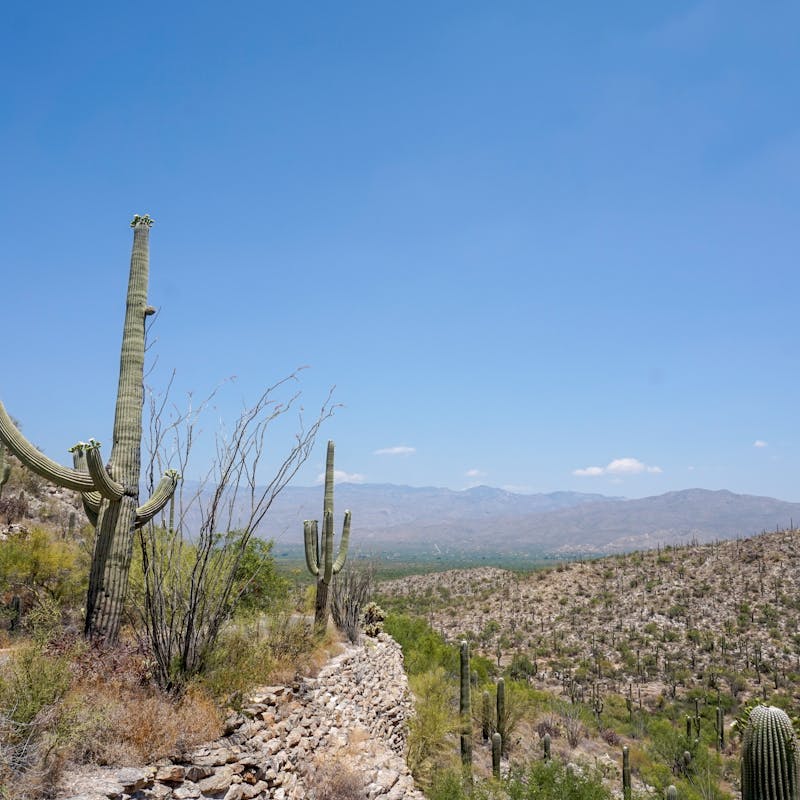
The saguaro cactus is an incredibly popular icon across the American Southwest, but in reality, it's a rare and delicate plant. Its native habitat is strictly in southern Arizona, Sonora, Mexico, and in a tiny sliver of California, and though it grows slowly, it can live for 150 years or more, and reach massive size; it's not uncommon for a saguaro to be 40 feet tall and weigh 3,200-4,800 pounds when fully hydrated. Saguaro National Park in Tucson was created to protect this unique cactus, particularly because it really thrive in this area. The park is split into two districts: the more-developed Rincon Mountain District directly east of Tucson; and the less-developed Tucson Mountain District directly west of Tucson. Both have scenic drives and hikes (like King Canyon Trail and Cactus Forest Drive) that highlight the saguaro and the unique landscape the cactus calls home.

It isn't a road trip on I-10 in Arizona if you don't encounter a few billboards asking "WHAT IS THE THING?" The Thing is both the name of a kitschy roadside attraction, and the artifact at its center. The attraction has changed a few times since it opened about 50 years ago, most recently getting a major renovation in 2018. It's not fun to spoil exactly what The Thing itself is, but the attraction presents a hypothetical story about an intergalactic battle over The Thing spanning all of time and space. Expect to see ray-gun wielding aliens riding dinosaurs, and UFOs inserted into major world events. All in all, no matter what The Thing actually is, it's worth the few bucks to get in and experience the attraction in all its bizarre glory.
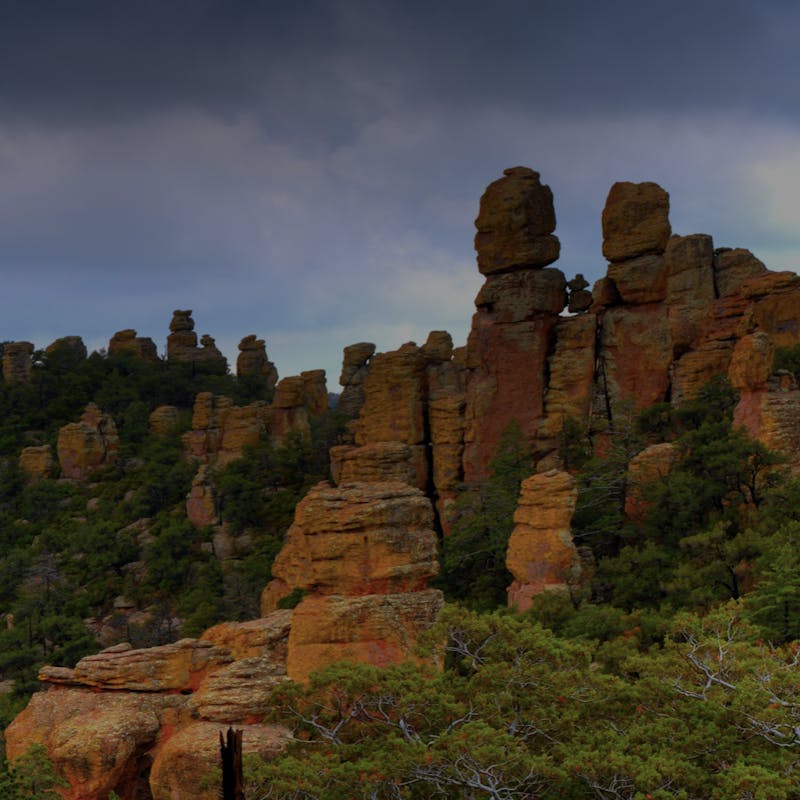
Within the Chiricahua Mountain Range lies an 11,984-acre area filled with unusual hoodoos, stone spires, and balanced rocks known as Chiricahua National Monument. The forest of strange natural rock formations was caused by a volcanic eruption and subsequent erosion. There are some great hikes here that show off why the monument is known to many as a Wonderland of Rocks; Massai Point, Natural Bridge Trail, Echo Canyon Loop, and Inspiration Point are all good morning or afternoon hikes. You can also visit Faraway Ranch, a home built by Swedish immigrants that was converted into a guest ranch in 1917 by the couple's children. It operated into the 1970s, some 50 years after the Monument was established, and was eventually sold to the park. The NPS restored the ranch house and offers tours on weekends.
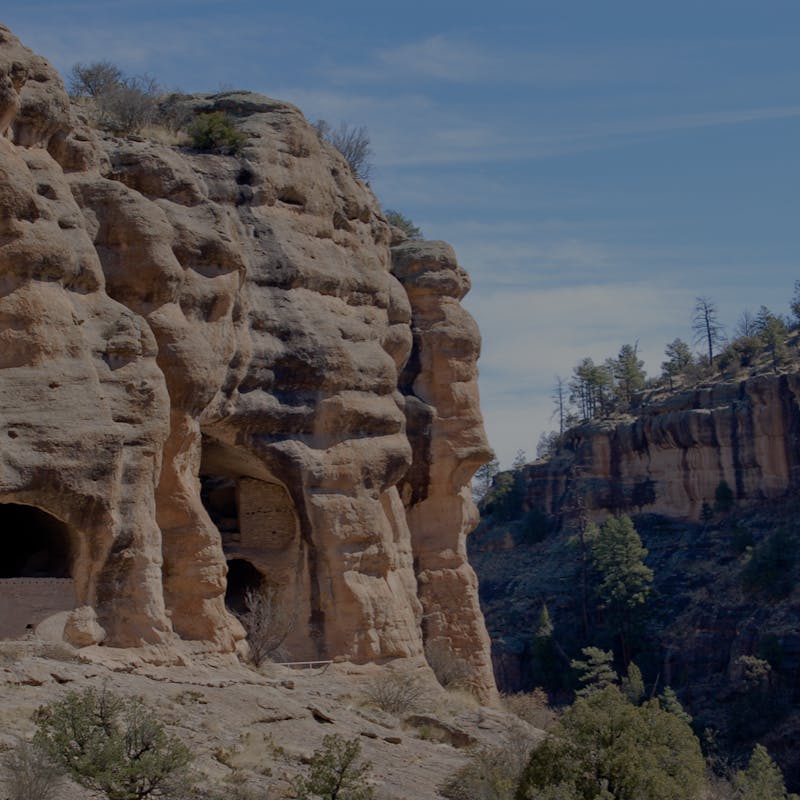
New Mexico has a wealth of Native American history. Gila Cliff Dwellings National Monument preserves the remains of the Mogollan people, who built dwellings in the caves along the Gila River in the late 13th century. Though the Mogollon only occupied this space for about 20 years, their dwellings have endured. The Cliff Dweller Canyon Site has 46 rooms spread across five caves, and an easy, mile-long loop trail takes visitors past them. Mummies were found in the dwellings when they were rediscovered, and though most were lost to looting, the Smithsonian acquired one. The visitor center contains other artifacts from and lots of information about the Mogollon tribe. Also, there are hot springs within the park that visitors can hike to from the visitor center for soaking. Jordan Hot Spring and Lightfeather Hot Spring are the two most popular; just make sure to follow all rules and safety precautions when visiting.
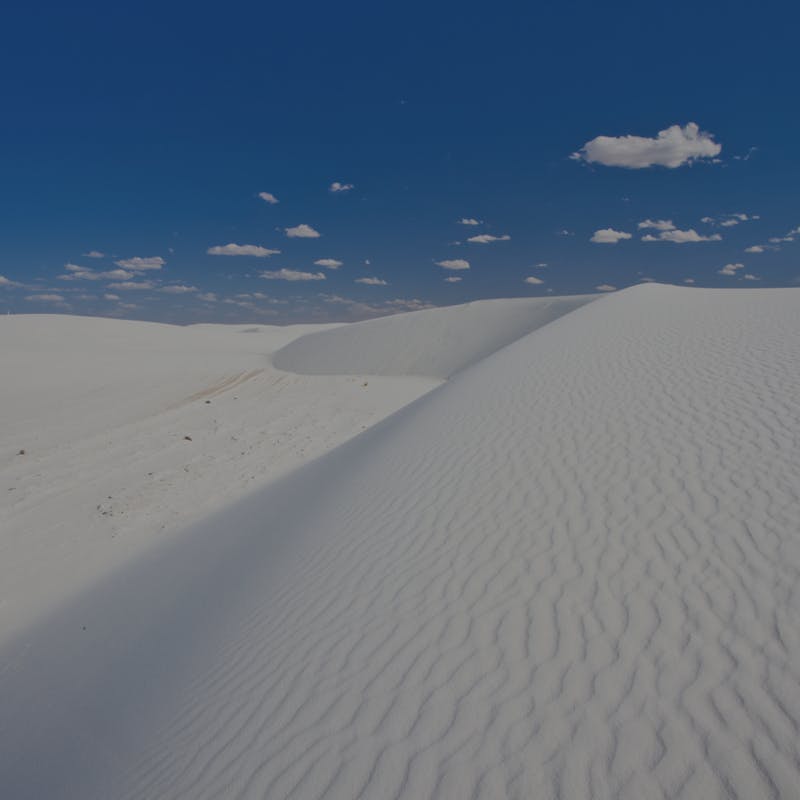
Further into New Mexico is the largest gypsum dune field in the world. Gypsum sand is pure white, creating a dramatic landscape of bright white, wave-like dunes that stretches for 275 square miles. Cruise Dunes Drive into the Monument for that feeling of being miles from civilization, or hike the Backcountry Camping or Alkali Flat Trails into the heart of the dune field. The white sand doesn't absorb heat from the sun as easily, so it’s not too hot to walk on barefoot, and the dunes are great for sledding and boarding down. There's an area just off Dunes Drive where sledding is permitted, and you can buy waxed saucer sleds at the visitor center. The visitor center itself is a gorgeous, 1930s-era Pueblo Revival building with a native plant garden and interactive museum.
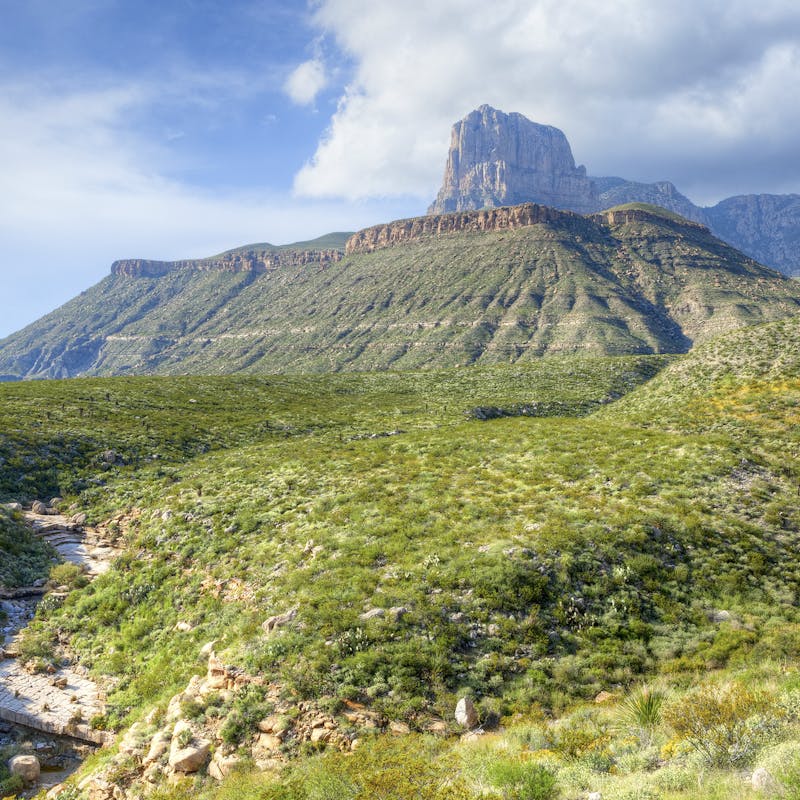
Guadalupe Mountains National Park is a swath of wilderness that highlights the diversity of Texas. This is one of the country's least-visited national parks, but it's not for lack of natural beauty. At first glance, all that can been seen are dry, rocky mountains, but tucked among the mountain peaks are grottos, natural springs, and deep canyons. The park is home to the highest peak in Texas, the 8,751-foot Guadalupe Mountain, which makes for a great day hike. It's actually home to the next three highest peaks in the state as well. But Guadalupe Mountains is in a remote part of West Texas, with fewer amenities around. The park is mostly popular with hikers, and it's not hard to see why; there are 80 miles of trail, ranging from scenic to strenuous, with backcountry and campsite camping. Plus, there aren't any roads into the park... the good stuff can only be reached by foot. The park also contains some sights for history buffs. You can see the remains of Pinery Station, a former stopover on the Butterfield Overland Mail Route, and the 1876 Frijole Ranch property, which now houses exhibits on the history of the park.
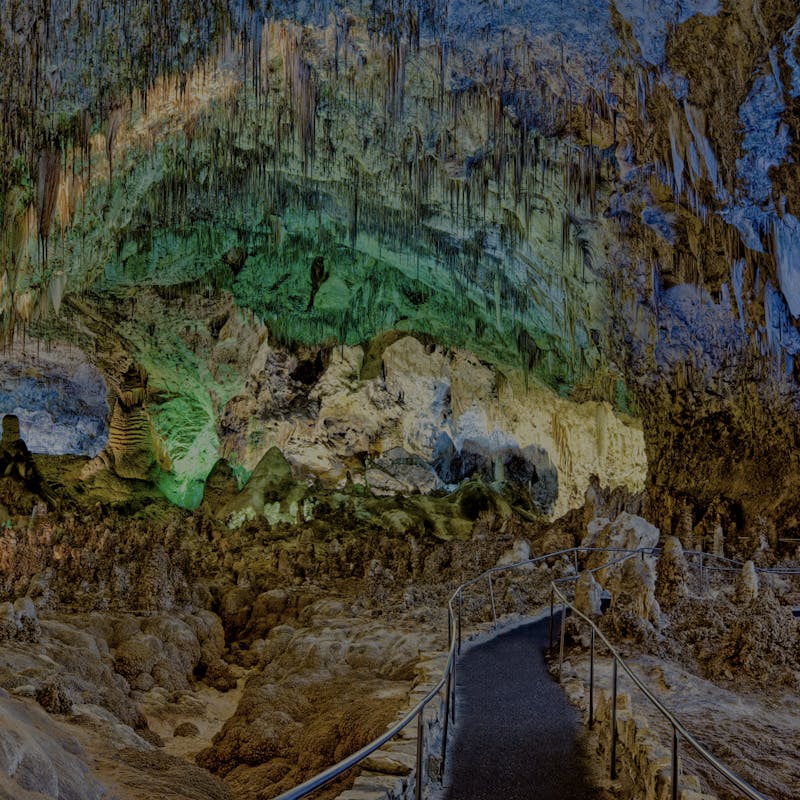
Guadalupe Mountains National Park is often overlooked in favor of nearby Carlsbad Caverns National Park, in New Mexico. Carlsbad Caverns National Park is, admittedly, super cool. It's probably the only park in the NPS system where rangers are discovering more of it every day. Today, the caves are some of the most-visited in the country, with over 116 known caverns to explore. Guests can take both self-guided and ranger-led tours of the magical underground world. There are two self-guided trails for those who are short on time: the Natural Entrance Trail, which descends 79 stories from the mouth of the cave to the Big Room; and the Big Room Trail. Otherwise, there are tons of ranger-led tours that provide access to caverns filled with cave formations like crystals, stalactites, stalagmites and more. Some tours need to be booked in advance and might cost extra. Other highlights include the bat programs at night, where you can watch nearly 400,000 Brazilian free-tail bats leave the caves for their nightly feedings, and the retro-tastic Underground Lunchroom, which has a mailbox where you can send out postcards that will get stamped with a statement declaring the letter was "mailed from 750 feet below ground."
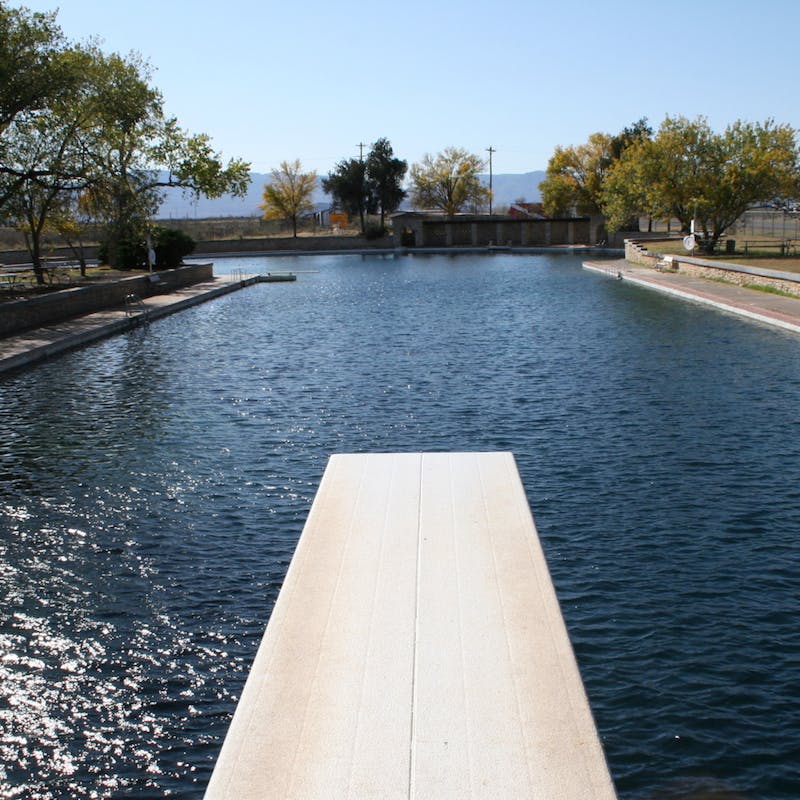
Texas is home to the world's largest spring-fed swimming pool, which is located at Balmorhea State Park. The pool was built in the 1930s by the Civilian Conservation Corps (CCC) and the only fee is the entrance to the park: $7 for adults (children are free). The pool occupies more than 1.75 acres and is up to 25 feet deep in places. Everything really is bigger in Texas! Since it's so deep, those who are scuba-certified can take a night dive in the pool for an extra $5. The park also has a campground and a motor lodge onsite for those who want to spend a full day, or even weekend, exploring everything the park has to offer.
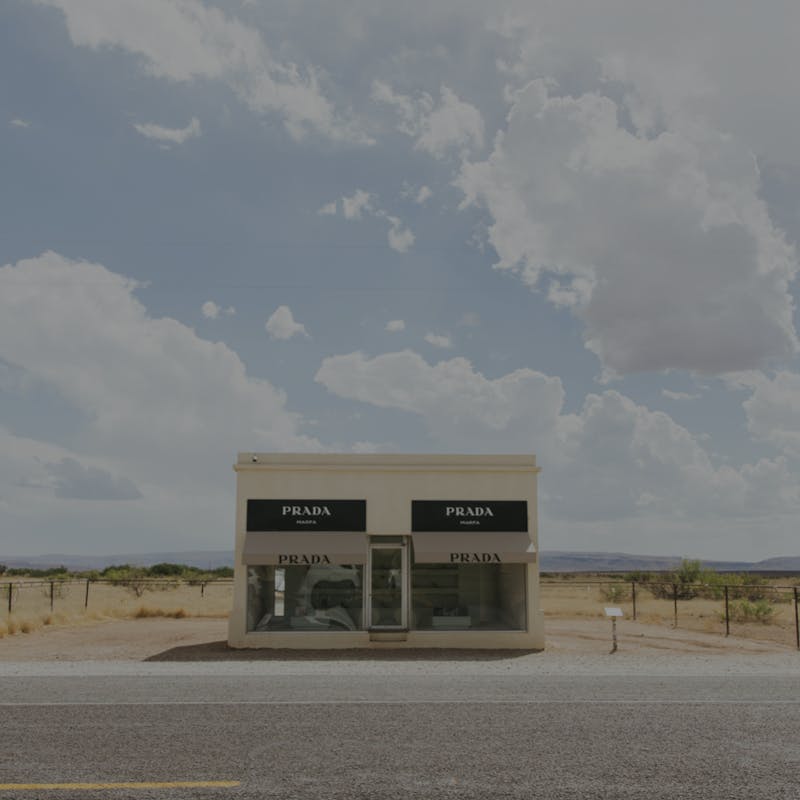
Situated just off U.S. Highway 90 is a permanent art installation that has become a famous sight in west Texas: Prada Marfa. It's basically a replica of a fully-stocked Prada store located in the middle of nowhere. Built in 2005, the artists planned for it to remain untouched until the elements weathered it down-- that is, it was supposed to be untouched; vandals broke in and stole the designer shoes on display in the window and kind of defeated the purpose. Either way, it's been secured now, and is still hailed as a “pop architectural land project.” The town that lends the "store" its name, Marfa, is a funky and colorful community known for attracting artists from all over, and is a must-visit.
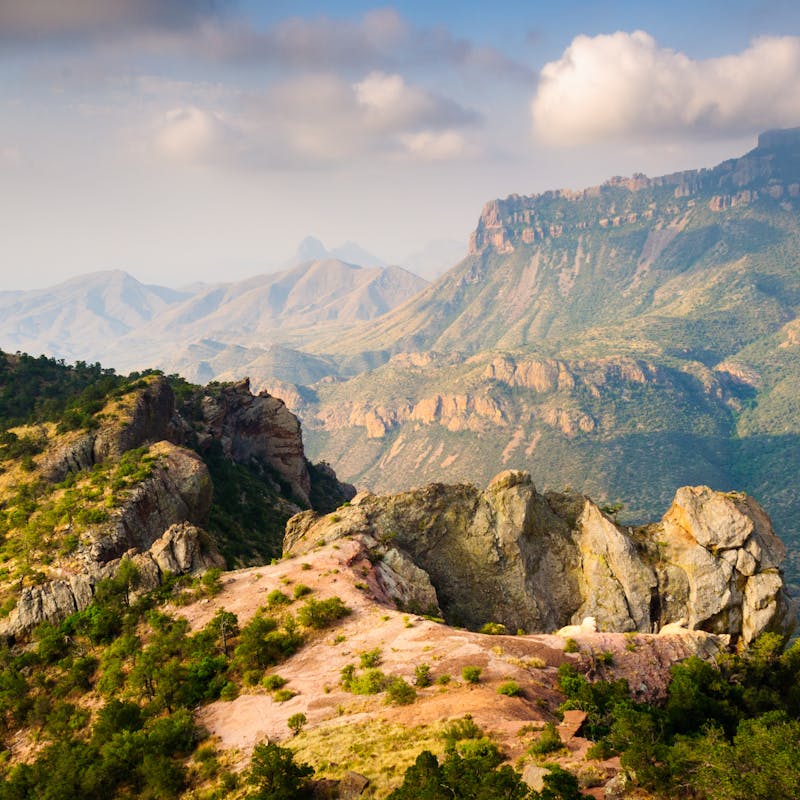
End your road trip at one of the country's most underrated National Parks: Big Bend. It's burning hot, bone dry, in the middle of nowhere, and absolutely amazing. It's one of the lesser- visited parks, thanks to its remote location, but that simply means that you'll have all this natural beauty to yourself. Probably the best feature of the remote location is the stargazing. Big Bend is an International Dark Sky Park, one of a handful in the whole world, and it's the best park in the lower 48 for astronomers to check out the Milky Way. There's barely any light pollution, and you can see over 2,000 stars on any given night, compared to a few hundred in most small cities. There are hikes to waterfalls (Pine Canyon Trail and Cattail Falls), hot springs, balanced rocks, and stunning scenic vistas like The Window. And while you're in the area, make your way out to the ghost town of Terlingua. It's a mostly-abandoned mining town in the park with such an allure that some people refuse to leave. Visit the Starlight Theatre to enjoy a drink on the porch with the locals, or time your trip to coincide with one of Terlingua's two famous chili cook-offs.
The American Southwest isn't one landscape; it's made up of many things. It is towns, big cities, caves and mountains, natural spring-fed pools and stretches of rocky desert. Its white sand and gemstone logs and fossils and the remains of ancient civilizations. Here, you'll find some of the country's most popular national parks, alongside some of its least-visited. Whatever it is about the Southwest that appeals to you, there's so much more to uncover, and it's all worth experiencing.
Photo Credit: David Aleksandrowicz / Shutterstock; Frank Bach / Shutterstock; Ekaterina Pokrovsky / Shutterstock; Paul B. Moore / Shutterstock; Erika J Mitchell / Shutterstock; Juancat / Shutterstock; Anton Foltin / Shutterstock; Doug Meek / Shutterstock; Allyson Kitts / Shutterstock; Zack Frank / Shutterstock
Whether you're new to the world of RVing or you're ready to narrow your search, we're here to help you sort through it all and find the RV that's right for you. Explore RVs based off of your lifestyle and the features important to you.
